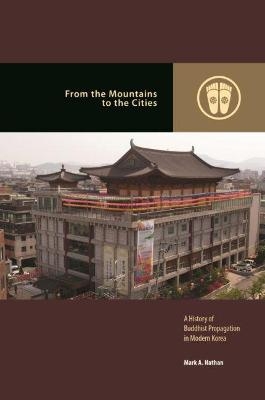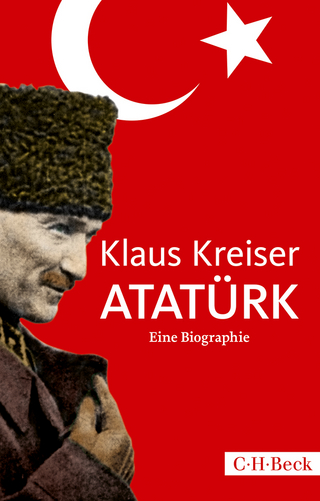
From the Mountains to the Cities
A History of Buddhist Propagation in Modern Korea
Seiten
2021
University of Hawai'i Press (Verlag)
978-0-8248-9248-7 (ISBN)
University of Hawai'i Press (Verlag)
978-0-8248-9248-7 (ISBN)
- Titel z.Zt. nicht lieferbar
- Versandkostenfrei innerhalb Deutschlands
- Auch auf Rechnung
- Verfügbarkeit in der Filiale vor Ort prüfen
- Artikel merken
Traces p’ogyo, the active propagation of Korean Buddhist teachings and practices, from the late nineteenth to the early twenty-first century. While advocates stressed the traditional roots and historical precedents of the practice, they also viewed p’ogyo as an effective method for the transformation of Korean Buddhism into a modern religion.
At the start of the twentieth century, the Korean Buddhist tradition was arguably at the lowest point in its 1,500-year history in the peninsula. Discriminatory policies and punitive measures imposed on the monastic community during the Chosŏn dynasty (1392–1910) had severely weakened Buddhist institutions. Prior to 1895, monastics were prohibited by law from freely entering major cities and remained isolated in the mountains where most of the surviving temples and monasteries were located. In the coming decades, profound changes in Korean society and politics would present the Buddhist community with new opportunities to pursue meaningful reform. The central pillar of these reform efforts was p’ogyo, the active propagation of Korean Buddhist teachings and practices, which subsequently became a driving force behind the revitalization of Buddhism in twentieth-century Korea.
From the Mountains to the Cities traces p’ogyo from the late nineteenth to the early twenty-first century. While advocates stressed the traditional roots and historical precedents of the practice, they also viewed p’ogyo as an effective method for the transformation of Korean Buddhism into a modern religion—a strategy that proved remarkably resilient as a response to rapidly changing social, political, and legal environments. As an organizational goal, the concerted effort to propagate Buddhism conferred legitimacy and legal recognition on Buddhist temples and institutions, enabled the Buddhist community to compete with religious rivals (especially Christian missionaries), and ultimately provided a vehicle for transforming a "mountain-Buddhism" tradition, as it was pejoratively called, into a more accessible and socially active religion with greater lay participation and a visible presence in the cities.
Ambitious and meticulously researched, From the Mountains to the Cities will find a ready audience among researchers and scholars of Korean history and religion, modern Buddhist reform movements in Asia, and those interested in religious missions and proselytization more generally.
At the start of the twentieth century, the Korean Buddhist tradition was arguably at the lowest point in its 1,500-year history in the peninsula. Discriminatory policies and punitive measures imposed on the monastic community during the Chosŏn dynasty (1392–1910) had severely weakened Buddhist institutions. Prior to 1895, monastics were prohibited by law from freely entering major cities and remained isolated in the mountains where most of the surviving temples and monasteries were located. In the coming decades, profound changes in Korean society and politics would present the Buddhist community with new opportunities to pursue meaningful reform. The central pillar of these reform efforts was p’ogyo, the active propagation of Korean Buddhist teachings and practices, which subsequently became a driving force behind the revitalization of Buddhism in twentieth-century Korea.
From the Mountains to the Cities traces p’ogyo from the late nineteenth to the early twenty-first century. While advocates stressed the traditional roots and historical precedents of the practice, they also viewed p’ogyo as an effective method for the transformation of Korean Buddhism into a modern religion—a strategy that proved remarkably resilient as a response to rapidly changing social, political, and legal environments. As an organizational goal, the concerted effort to propagate Buddhism conferred legitimacy and legal recognition on Buddhist temples and institutions, enabled the Buddhist community to compete with religious rivals (especially Christian missionaries), and ultimately provided a vehicle for transforming a "mountain-Buddhism" tradition, as it was pejoratively called, into a more accessible and socially active religion with greater lay participation and a visible presence in the cities.
Ambitious and meticulously researched, From the Mountains to the Cities will find a ready audience among researchers and scholars of Korean history and religion, modern Buddhist reform movements in Asia, and those interested in religious missions and proselytization more generally.
Mark A. Nathan is associate professor in the Department of History and the Asian Studies Program at the University at Buffalo, the State University of New York.
| Erscheinungsdatum | 01.09.2021 |
|---|---|
| Reihe/Serie | Contemporary Buddhism |
| Verlagsort | Honolulu, HI |
| Sprache | englisch |
| Maße | 152 x 229 mm |
| Gewicht | 330 g |
| Themenwelt | Geisteswissenschaften ► Geschichte ► Regional- / Ländergeschichte |
| Geisteswissenschaften ► Religion / Theologie ► Buddhismus | |
| ISBN-10 | 0-8248-9248-8 / 0824892488 |
| ISBN-13 | 978-0-8248-9248-7 / 9780824892487 |
| Zustand | Neuware |
| Haben Sie eine Frage zum Produkt? |
Mehr entdecken
aus dem Bereich
aus dem Bereich
Erinnerungen
Buch | Softcover (2024)
Pantheon (Verlag)
16,00 €


